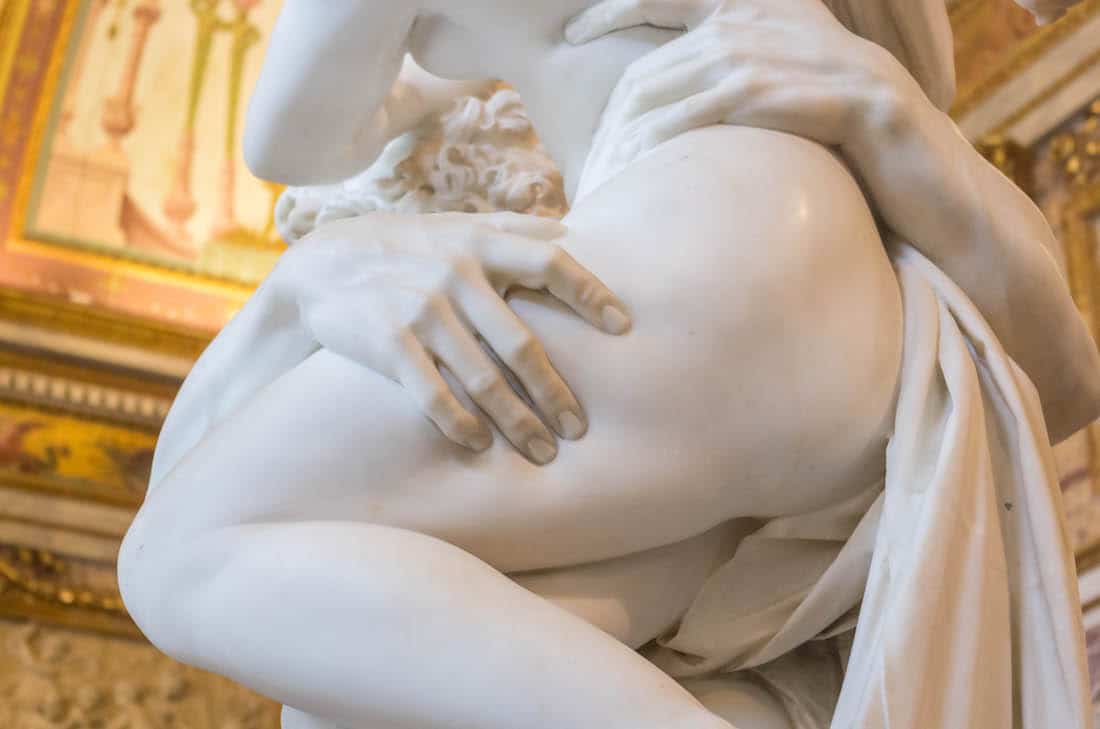In the 17th century, artists in Italy began embracing an increasingly elaborate style. Known as the Baroque movement, this shift toward an ornate, over-the-top aesthetic is evident in both the art and architecture of the time, with master of materials Gian Lorenzo Bernini at the forefront. In addition to designing St. Peter’s Basilica (one of Italy's most important monuments), Bernini was a celebrated sculptor, with The Rape of Proserpina among his most treasured creations.
Crafted in the early 17th century, this marble sculpture illustrates several of Bernini's strong suits, including his mastery of anatomy and ability to evoke both dynamism and drama. While these achievements continue to garner praise for the sculptor today, its unsavory subject matter has cast a controversial shadow over the work—though it remains a quintessential highlight of both the Baroque era and of marble sculpture as a whole.
Bernini completed The Rape of Prosperina between 1621 and 1622. Though the Naples-born artist was just 23 years old at the time, he was already seeing success as a budding artist. While he wouldn't complete his architectural masterpiece, St. Peter’s Basilica, for over 40 years, he had already carved out a name for himself in the early 1620s as a celebrated sculptor with four masterpieces: David; Aeneas, Anchises, and Ascanius; Apollo and Daphne; and, of course, The Rape of Proserpina.
Measuring nearly 7.5 feet tall, the piece is carved from Carrara marble, a material derived from Tuscany and historically used by ancient Roman builders and, more recently, by Mannerist and Renaissance artists. The softness of this high-quality marble lended itself to Bernini's craft, as he “prided himself on being able to give marble the appearance of flesh.”
This interest in transforming stone into skin is particularly evident in The Rape of Proserpina, a piece intended to portray a dramatic abduction (in the case of its title, the term “rape” refers to the act of kidnapping). “Pushed to the point of grazing the physical limits of marble,” Bernini's attention to detail and interest in realism is evident in the work's anatomical details. As the hand of Pluto (the sculpture's male subject) grabs the thigh of Proserpina (the female figure), his grasping fingers appear to sink into her seemingly soft skin. Similarly, straining to overpower her, the muscles in his bent legs and tense arms protrude, while her flowing hair and twisting drapery suggest movement.
Like many of Bernini's earlier works, The Rape of Proserpina was commissioned by Cardinal Scipione Borghese, an avid art collector and devoted patron of both Bernini and fellow Baroque artist Caravaggio. On the heels of the High Renaissance, people remained interested in reviving a Classical approach to art—including subjects inspired by Ancient Greek and Roman mythology.










